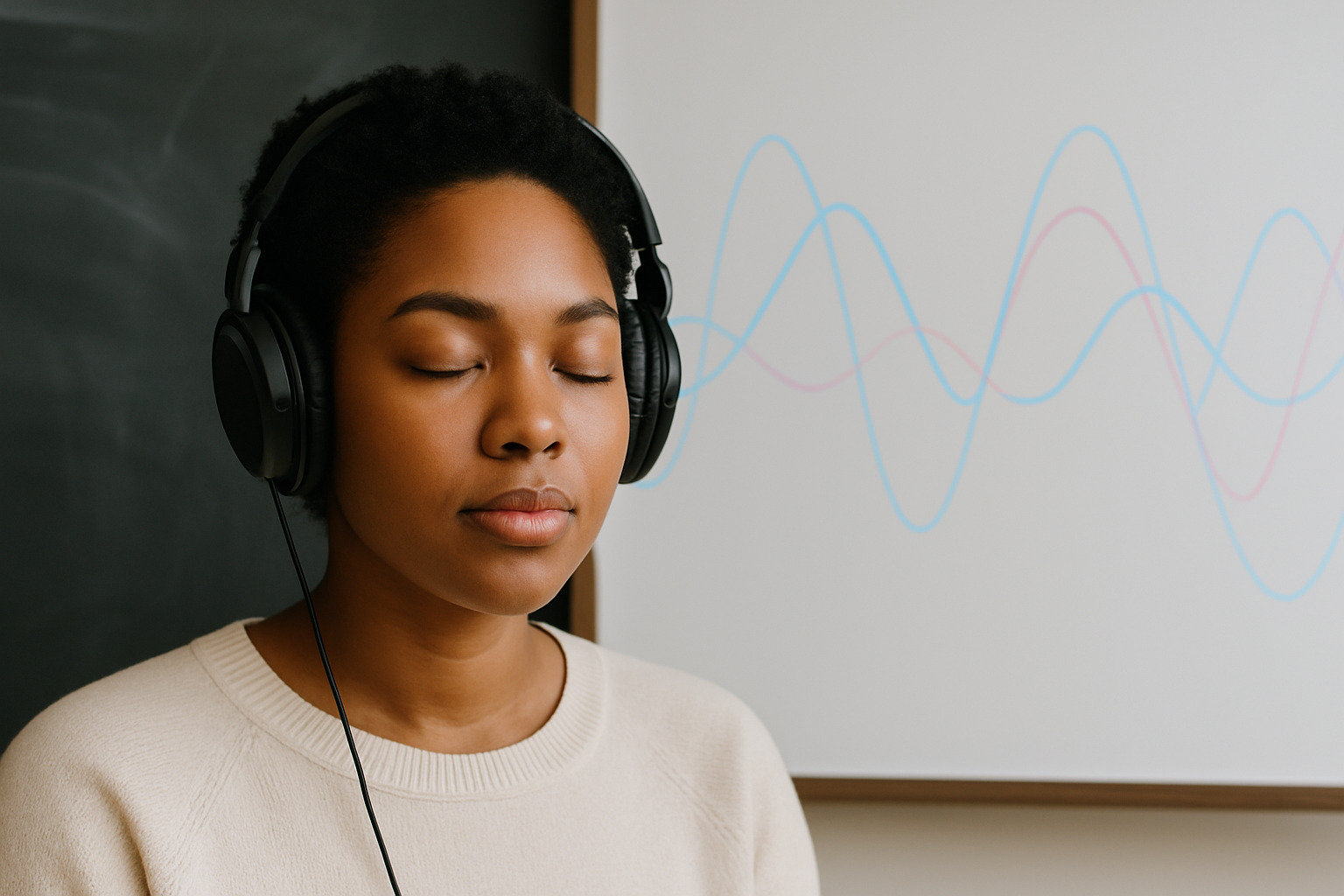Can certain frequencies make you more productive? Can a playlist ease anxiety? The short answer: yes. Sound is not just background noise—it actively shapes how we think, feel, and perform.
Whether you’re powering through a deadline or winding down before bed, the right audio cues can influence your brainwaves, hormone levels, and heart rate. Understanding the science behind it allows you to use music more deliberately to improve mental clarity and well-being.
How the Brain Responds to Sound
Sound waves are processed by the auditory cortex and limbic system, two regions deeply involved in emotion, memory, and cognition. Certain frequencies stimulate specific neural responses:
- Alpha waves (8–13 Hz): Promote relaxed alertness, ideal for focus.
- Beta waves (13–30 Hz): Boost alertness and active thinking.
- Theta waves (4–8 Hz): Associated with meditation and light sleep.
- Delta waves (0.5–4 Hz): Deep sleep and restoration.
Music or sounds that mimic these frequencies can influence your mental state. Binaural beats—two tones at slightly different frequencies played in each ear—can help guide the brain into these rhythms.
Frequencies That Improve Focus
Focus depends on reducing distractions and enhancing attention. Certain sound profiles help create the right environment:
1. Binaural Beats in the Alpha or Beta Range
- Encourages sustained attention.
- Works best with headphones for full effect.
- Often used in deep work sessions or while studying.
2. Brown Noise
- Lower frequency than white noise.
- Rich, deep hum that can reduce mental chatter.
- Suitable for open-office environments or ADHD management.
3. Classical or Instrumental Music
- Avoids lyrics, which can interrupt verbal processing.
- Baroque pieces with a tempo around 60 bpm sync well with resting heart rates.
4. Nature Sounds
- Waterfalls, rainfall, and forest ambiances.
- Trigger parasympathetic nervous system responses that lower stress.
The Link Between Music and Wellness
Music doesn’t just help with focus. It can reduce cortisol levels, balance heart rhythms, and even affect immune response.
Mood Regulation
Listening to your favorite songs can trigger dopamine release. This is the same neurotransmitter involved in pleasure, motivation, and reward. Upbeat music can reduce symptoms of depression and anxiety by altering brain chemistry.
Pain Management
Studies show that patients listening to calming music before surgery need less anesthesia. Music therapy is also used in chronic pain treatment to reduce perceived discomfort.
Sleep Quality
Delta-frequency tracks promote deep sleep by guiding the brain into slow-wave activity. Consistent bedtime sound rituals signal the body to relax and prepare for rest.
Practical Use in Daily Life
You don’t need to spend hours curating playlists. Small adjustments to your sound environment can lead to noticeable improvements in focus and emotional regulation.
Morning Routine
Start with gentle instrumental or nature sounds to ease into the day without a cortisol spike.
Work Sessions
Use brown noise or instrumental beats to block distractions. If you’re listening to content in less common formats, an online audio converter can help you prepare tracks that work with your preferred app or device.
Breaks and Walks
Upbeat music with 120–140 bpm can match a brisk walking pace and improve circulation, which supports brain function.
Evenings
Wind down with ambient sounds or slow jazz. These choices support lower heart rates and cortisol levels, which are needed for quality sleep.
What Science Says About Music and Memory
Music activates both hemispheres of the brain. This dual engagement improves memory retention and cognitive performance. It’s why students often retain material better when it’s linked with rhythmic patterns or melodies.
Even in Alzheimer’s patients, music from earlier life stages can trigger autobiographical memory recall. This connection highlights music’s deep integration with our sense of identity and memory storage.
Sound Tools for Wellness
You don’t need a professional sound engineer to make sound part of your self-care routine. Here are tools that simplify the process:
- Focus@Will: Curated tracks for specific cognitive outcomes.
- Endel: Generates real-time adaptive soundscapes.
- Noisli: Mix and match white noise, rain, and forest sounds.
- MyNoise: Customize noise textures by frequency range.
Final Thoughts
Sound is a tool. When used intentionally, it can support work, sleep, mood, and physical health. With access to targeted playlists, sound therapy apps, and easy ways to convert or customize audio, anyone can build a personal sound strategy that works.
It’s not about finding the perfect track—it’s about finding what works for your rhythm, goals, and mental state. The science supports it. The technology makes it accessible. The results are often immediate.
